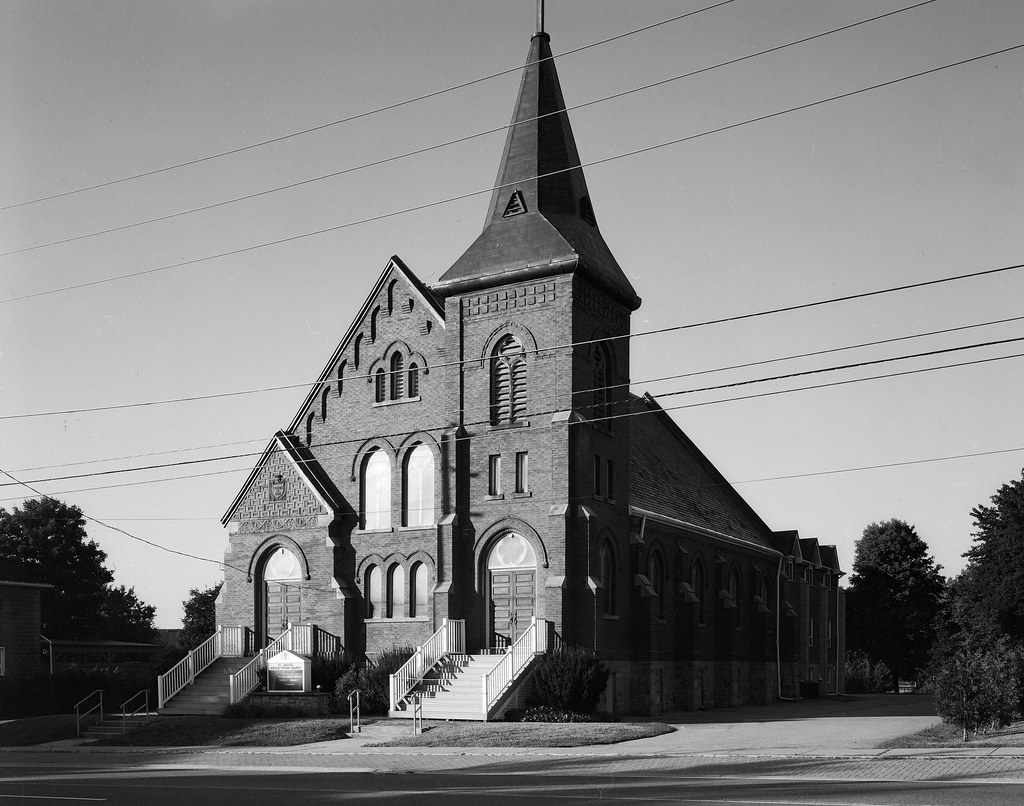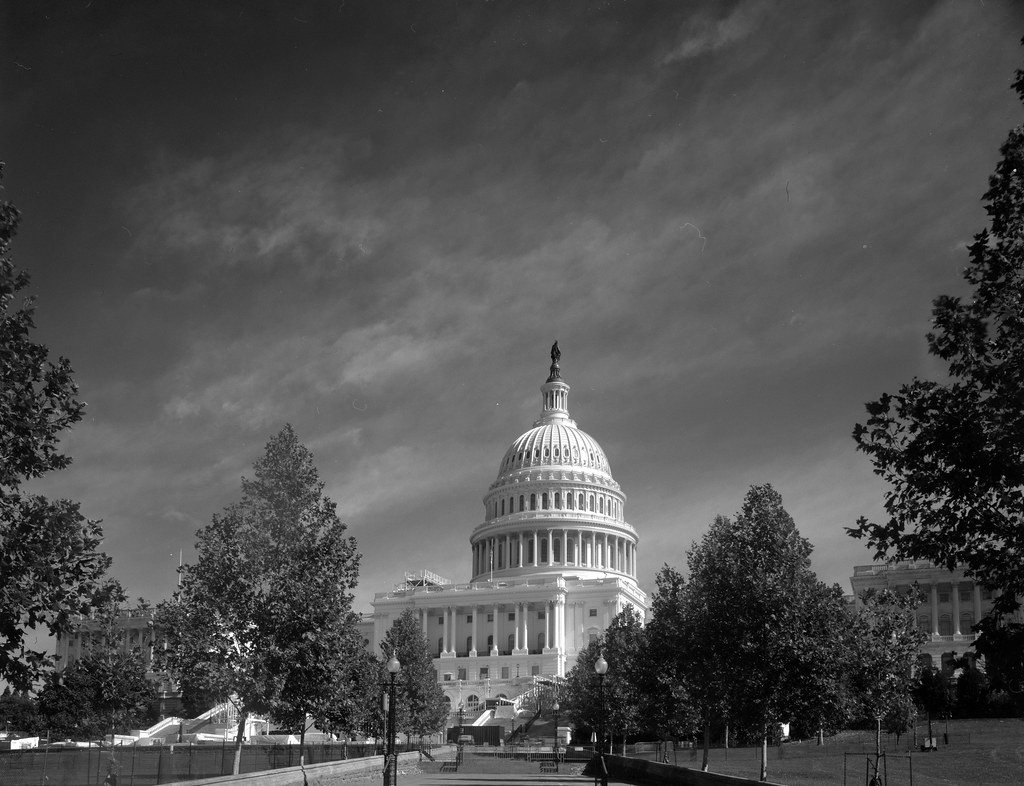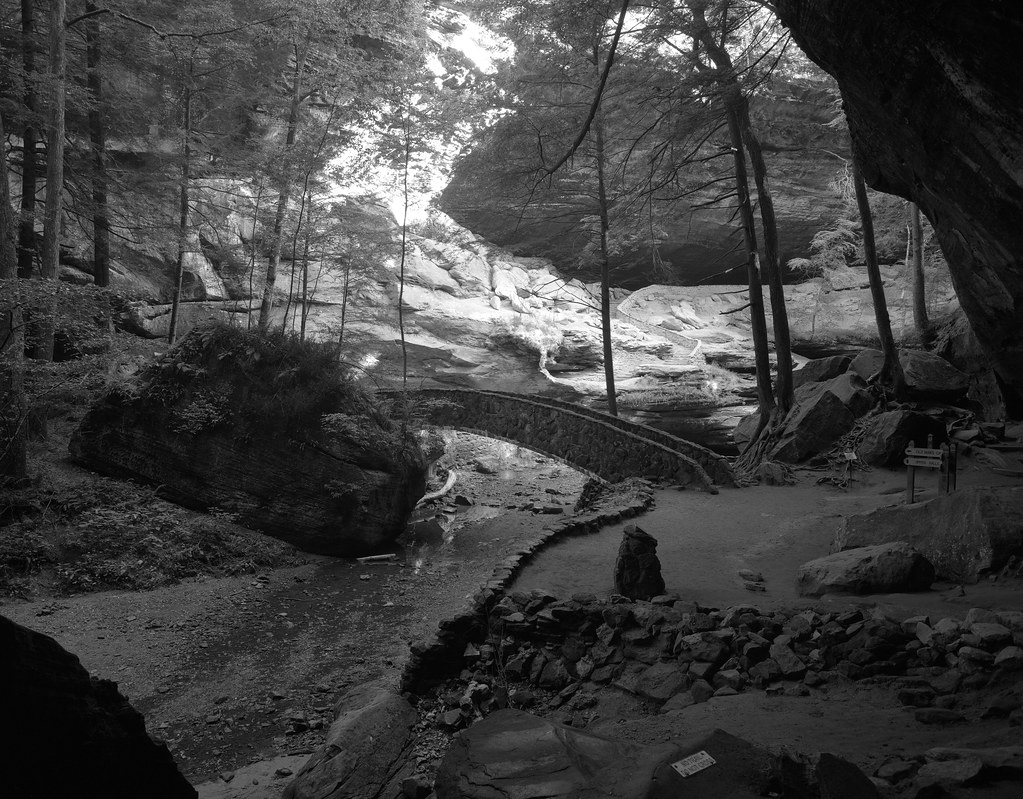One more shot, one more shot! While today such a call is commonplace in the day where the number of images you can get is dependent on how fast your camera’s shutter works and how large and fast the memory card that you have in your camera is, but back in the early 20th Century, asking for one more shot could mean sacrificing one in the future. But many iconic images and photographers worked with large format cameras and the idea of a Press Camera pre-dates the camera I’m reviewing today by nearly three decades. While the Crown Graphic is not as well known as its faster cousin, the Speed Graphic it none-the-less has become a workhorse camera for me and the sole large format camera in tool-kit.

Camera Specifications
Make: Graflex Inc, a Division of Singer Corp.
Model: Pacemaker Crown Graphic
Type: Press Camera
Format: Large Format (4×5)
Lens: Interchangeable, Pacemaker Board
Year of Manufacture: 1947-1973

Background
Founded in 1897 the Folmer & Schwing Corporation by William Folmer and William Schwing to produce a variety of gas lamps. But the age of the gas lamp was at the end and the company shifted quickly to produce bicycles and cameras. Their bicycle venture quickly ended with the release of their first camera in 1899, the Graflex Reflex camera. The camera as the name implies is a single-lens-reflex with a top-down viewfinder, mirror, lenses, and focusing. It shot on sheet film, between the smallest 2×3 up to 5×7. But what made the Graflex Reflex popular is that it used a focal plane shutter that allowed photographers to shoot up to 1/1000th of a second, making it popular among press and sports photographers. The popularity of the Graflex put Folmer & Schwing on the map and put a crosshair on them. Eastman Kodak would scoop up Folmer & Schwing in 1905, moving the whole operation to Rochester, New York in 1907 changing the name to the Folmer Graflex division of Eastman Kodak. Under Kodak they began developing a new style of press camera, instead of a single-lens-reflex they went for a far more compact press camera and in 1912 the first Speed Graphic came out. These early Speed Graphics, known today as “Top Handle” due to the carry handle mounted on the top of the camera body. The folding lens bed allowed the camera to be far more compact. But by 1920 the small front standard prevented the use of modern faster lenses. An anti-trust ruling forced Eastman-Kodak to divest Graflex and returning the company back to the status of an independent company. In 1927 they released a new model, which included a couple of upgrades, first a larger front standard to accept faster lenses and an improved viewfinder. These also included early versions of the Kalart rangefinder to assist in focusing. These are known today as Pre-Anniversary Speed Graphics. Further updates resulted in the 1940 Anniversary Speed Graphic the biggest improvement linked the focusing rails allowing for improved focusing of wide-angle lenses. Of all the early models, the Anniversary Speed Graphic has some history behind it being the camera that took the famous flag-raising photo on Iwo Jima. In 1947 the Graphic system saw its first major update since the creation of the line with the introduction of the Pacemaker Models. The Pacemaker Speed Graphic updated the lens board to a formed metal board rather than wood and included a body-mounted shutter release and adjustable infinity stops on the focusing rails. In addition to the Speed Graphic, Graflex (now known as Graflex Inc.) released a lower-spec version, the Crown Graphic which lacked the focal plane shutter than the Speed Graphic was well known for. The Crown Graphic provided a lighter version, but lacked the fast 1/1000th second speed and relied on the leaf shutters in the lenses. Only one minor change would be made the system in 1955 with a change to a top-mounted Graflex produced rangefinder rather than the iconic Kalart device. Production of the Crown Graphic would end in 1973. As would the whole company, which had spent 1958 to 1973 first as a division of Precision General and then Singer Corporation before being dissolved and the tooling purchased by Toyo.




Impressions
From the outside, the camera looks like something far older than what it is and I certainly get strange looks and lots of questions when I’m in the field working with the beast. But you have probably seen the camera if you watch period films such as Cinderella Man or caught a glimpse of the iconic flash tube in Star Wars. In a folded up configuration, the camera is little more than a box, but once you have the camera deployed it is a rather large camera but is well set up for use on a tripod or handheld. The biggest problem is locating the release button which is little more than a nub well hidden under the leatherette coating. The controls are limited, with all the exposure controls on the lens itself because the camera lacks a shutter. This is the first Graflex camera I’ve owned that has a rangefinder and I personally find the placement on the top of the camera body handy because the viewfinder and rangefinder windows are close to each other which makes handheld use far easier. But since I mostly use the camera as a view camera, having a built-in shade to the ground glass is handy on the days where I leave my focusing cloth (little more than a towel I picked up in Sydney, NS) at home. But in general, I find the camera rather handsome and always turns heads.




Experiences
As with any large format camera, you have to be ready for a certain amount of humility and frustration. Despite the overall size and shooting 4×5 sheet film, it is quick to set up and prepare to shoot with no matter how you are using the camera. Just make sure to find that release nipple without pressing it you will damage the camera trying to open it up. If you’re going to shoot the camera hand-held make sure that you pick the right lens that is calibrated to your rangefinder, I keep the 135mm lens calibrated for handheld use. I have only shot the Crown in the hand once, just to get the field for it and it is awkward having to set the exposure informal and swap out the film holders every shot (lacking the six-sheet holder). But the body-mounted shutter release makes it easy to trip the lens shutter as long as you have the trigger cam mounted. But the real treat is using the camera as a view camera there is a certain magic to focusing through the ground glass although it takes a bit to get used to the mirrored and upside-down image. But overall I find the camera a joy to use as a view camera more than handheld. But it’s a constant struggle to not forget a step and blow a sheet of film. One final note, the Crown Graphic like most press cameras lacks the range of movements associated with large format cameras, but you do have a decent number available including front rise (my favourite) plus some tilt, shift, and rotation.




Optics
When it comes to large format optics you have a wide range of lenses available of various ages and types. Just note that when it comes to the Crown Graphic you are limited between 90mm (wide-angle) to 300mm (telephoto). Just make sure that if you’re shooting that 90mm lens you drop the bed or it will creep into your shots (found that one out the hard way). The standard lenses that were mounted on the Crown Graphic were a Kodak Ektar lens, 127mm f/4.7 or a Schenider-Kreuznach Xentar 135mm f/4.7. While older both lenses have excellent optical qualities, but I do recommend the S-K lens because of the shutter which is easier to repair and maintain than the Kodak Supermatic shutters. Thankfully if there’s one thing that large format does well is universal equipment, you can mount any large format lens on the camera providing that you have a proper lens board. And that is the biggest weakness in the Graflex, the metal lens board needs to be manufactured rather than made from wood or even 3D Printed, although you can find original units along with newly made ones, just make sure to drill a properly sized hold to allow for your lens to be mounted. And one final note on classic lenses, it’s better to use modern glass as there are better coatings and easier to maintain shutters.




Lowdown
If you’re looking for an easy and inexpensive way to get into large format photography and don’t want to drop money on a new camera, then a Crown Graphic is probably the best way to go. And while many want to go with the much more iconic Speed Graphic the focal plane shutter requires a great deal of attention and repair. The lack of the focal plane shutter on the Crown Graphic gives you a clear path to larger and more ‘normal’ large format field cameras and view cameras. Although they have come up in price over the years, between 200-500 will often get you a camera, a lens, and maybe some film holders. But don’t just limit yourself to Graflex cameras there are plenty of If you want more details on how to get into large format, I recommend watching my good friend Mat’s ongoing YouTube series Large Format Fridays where he covers every aspect of large format photography.
Further Reading
Don’t just take my word on the Crown Graphic, you can check out the reviews by other awesome camera reviewers!
Vintage Camera Lab – Pacemaker Crown Graphic
Large Format Photography – Crown Graphic as a Field Camera
Film Still Photography – Crown Graphic Review